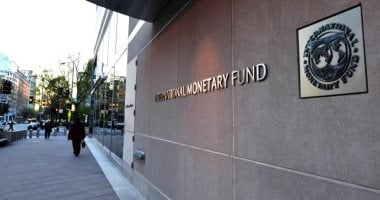The International Monetary Fund (IMF) has revised its economic growth projection for Angola downward to 2.1% for the current year, from an earlier estimate of 2.4%, citing weaker oil exports as a primary factor. The organization highlighted growing concerns about the country’s debt sustainability compared to the previous year. n nIn a statement, the IMF emphasized that Angola must reduce its financing needs and control public spending. It also recommended greater exchange rate flexibility to strengthen macroeconomic resilience. n nAngola has been affected by fluctuations in global oil prices and spreads on sovereign bond yields, compounded by lower oil production in the first half of 2025, which amplified the impact of external shocks. While the IMF assessed that Angola’s capacity to meet debt obligations remains sufficient, it cautioned that risks to this outlook have increased since last year. The fund specifically warned against two potentially unsustainable financing strategies: overreliance on domestic borrowing and short-term, high-cost external debt. n nExcessive reliance on local currency debt could heighten banks’ exposure to sovereign risk, while short-term external borrowing may lead to mounting debt service burdens. Such dynamics could erode investor confidence and delay Angola’s ability to access international capital markets under favorable conditions. The country also faces ongoing challenges from potential oil price declines and tighter external financing conditions. n nMeanwhile, the Angolan government is working urgently to reduce the size of oil-backed loans owed to China in an effort to ease fiscal pressures. n nThis assessment follows a review by the IMF’s Executive Board of a staff mission’s findings after visits to Luanda in May. The IMF had previously cut its growth forecast for Angola from an initial 3%. n nLike other small, open African economies, Angola has faced headwinds this year due to disruptions in financial markets linked to U.S. tariff policies. n nIn April, Angola was required to post an additional $200 million in collateral to JPMorgan Chase after the value of a bond used as security for a loan declined, amid broader sell-offs in frontier markets. However, the amount was later reclaimed when the bond’s value recovered. n nThe May visit by IMF officials to Luanda constituted a “post-financing assessment,” a procedural review for countries whose financial obligations to the fund exceed their quota shares, even when not currently enrolled in an IMF-supported program or monitoring arrangement. n— news from (اليوم السابع)n
— News Original —nصندوق النقد يخفض توقعاته للنمو الاقتصادي في أنجولا ويحذر من الديونn nخفض صندوق النقد الدولي توقعاته لنمو اقتصاد أنجولا للعام الجاري إلى 2.1% بعد أن كانت 2.4% سابقًا، بسبب تراجع صادرات النفط، محذرًا من ارتفاع المخاطر مقارنة بالعام الماضي فيما يتعلق بقدرة الدولة على سداد ديونها. n nوقال الصندوق – في بيان – إنه من الضروري لأنجولا أن تحدّ من احتياجاتها التمويلية وتخفض النفقات، مشددًا على أن تبني مرونة أكبر في سعر الصرف أمر مطلوب أيضًا. n nوأضاف الصندوق أن أنجولا قد تأثرت بتقلبات أسعار النفط وفروق العائد على السندات السيادية، إضافة إلى ضعف الإنتاج النفطي في النصف الأول من 2025، ما زاد آثار تلك الصدمات، مشيرا إلى أن قدرة أنجولا على سداد ديونها لا تزال “كافية”، محذّرا من أن المخاطر على هذا التقييم ارتفعت مقارنة بالعام الماضي، كما نبه أنجولا من خيارين تمويليين قد يكونان غير مستدامين الإفراط في الاعتماد على الديون المحلية، والديون الخارجية القصيرة الأجل مرتفعة التكلفة. n nوأوضح أن الاعتماد المفرط على التمويل المحلي يهدد بزيادة تعرض البنوك للديون السيادية، بينما قد تؤدي الحلول القصيرة الأجل إلى تراكم أعباء خدمة ديون مرهقة، ما يقوّض ثقة المستثمرين، ويؤخر في نهاية المطاف الوصول إلى الأسواق بشروط أفضل، لافتا إلى أن أنجولا تواجه تحديات من جراء احتمالية انخفاض أسعار النفط وتشديد ظروف التمويل الخارجي. n nكما تسابق الحكومة في أنجولا الزمن لخفض حجم القروض المضمونة بالنفط للصين في محاولة لتخفيف الضغط على أوضاعها المالية. n nوجاء البيان عقب مراجعة مجلس إدارة الصندوق لنتائج بعثة تقييم أجراها موظفوه في العاصمة الأنجولية لواندا خلال شهر مايو الماضي حيث كان الصندوق قد خفّض بالفعل توقعاته لنمو العام من 3% في البداية. n nوكغيرها من الاقتصادات الإفريقية الصغيرة المنفتحة، واجهت أنجولا تحديات العام الجاري مع اضطراب الأسواق المالية من جراء الرسوم الجمركية الأمريكية. n nوكانت أنجولا قد اضطرت في أبريل الماضي لدفع 200 مليون دولار كضمان إضافي لبنك “جيه بي مورجان” بعد أن تراجع سعر السند الذي تستخدمه كضمان لقرض من البنك الأمريكي، بالتوازي مع هبوط أصول أخرى في أسواق الحدود، لكنها استردت المبلغ لاحقًا عندما تعافى سعر السند. n nوكانت زيارة مسؤولي الصندوق إلى العاصمة لواندا في مايو الماضي بمثابة “تقييم ما بعد التمويل” وهو إجراء يُخصص للدول التي لديها التزامات مالية تتجاوز حصصها لدى الصندوق، ولا تخضع في الوقت نفسه لبرنامج دعم أو برنامج متابعة من جانب موظفيه.
